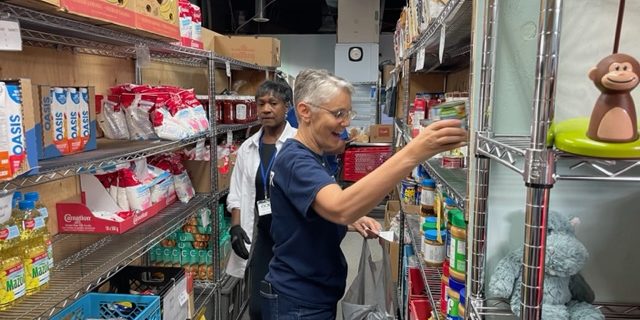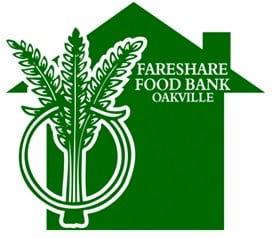Oakville food bank sees greatest demand in its history
Published December 5, 2023 at 9:58 am

When most people think of Oakville, what pops into their head are visions of elaborate homes, fancy cars and high-end shops.
But Stephen Rowe, the president of Fare Share Food Bank, sees another side. He sees a community that, despite having abundant affluence and wealth, has the greatest demand he’s ever seen.
“We just had the largest number of families use our food bank in its 37-year history,” said Rowe, a retired businessman who volunteers at the food bank to, as he puts it, “avoid sitting in front of the TV all day long.”
“Before the pandemic, there were about 350 families per month using the food bank.. The average family is 3.5 people.” That works out to about 1200 individuals receiving support.
Demand for the food bank spiked during the COVID-19 pandemic. What worries Rowe is that it hasn’t dropped.
“In November, we served 877 families. During the year, 520 families registered with us for the first time. The problem is growing.”
Rowe believes governments, at all levels, aren’t doing enough to combat the problem of food insecurity.
“It’s getting to the point that governments are telling people that banks are part of the whole food chain. They’re trying to slap a bandage on the symptom instead of dealing with the underlying causes.”
Fare Share Food Bank receives no government funding. It is completely reliant on donations. Everyone is a volunteer. Every penny they bring in goes to either rent or feeding your friends and neighbours.
“Oakville has the third highest per capita income in Canada. But according to town officials I’ve spoken with, it also has the highest rate of poverty in Halton. That is astounding to me.”
Rowe said they’re seeing more recent immigrants and refugees using the food bank. But they tend to be short-term, only relying on it until they get a job.
What’s more concerning to him is older, single women who are using the foodbank on a regular basis.
“Perhaps they’ve lost a spouse, lost some income support, and they can’t afford to keep living where they have been. Many of them are forced to come to us.”
And this story isn’t unique. There are dozens of foodbanks across Oakville, Burlington, Milton and Halton Hills, all of which have seen drastic increases in usage.
So how can you help?
Frankly, said Rowe, the answer is money.
“We can buy more food with your money than you can. We pay our rent, insurance, legal fees, and everything else goes to food. People in Oakville have been incredibly generous.”
Before COVID-19, the Fare Share Food Bank was spending about $400,000 per year on food. Now it’s $900,000.
Food donations are always accepted, though. But Rowe couldn’t stress enough that they have enough peanut butter and pasta.
“Those always seem to be the go-tos when it comes to donations. But trust me, we have plenty.”
Rowe said the organization’s web site is the place to go to find out what they need the most or to make a cash donation.
Volunteers are always welcome as well, although he said they ask for a one-year commitment from people so they can make long-term plans.
To make a donation or find out more about the food bank, visit here.






